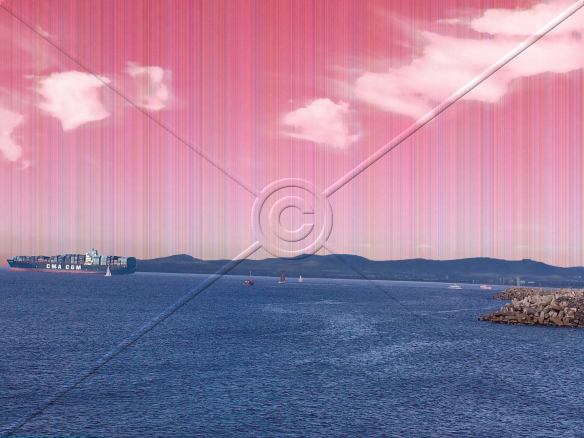Taken on a beautiful day in Cape Town, the picture that inspired this striated sky shows a CMACGM container ship leaving the harbour as smaller vessels sail about. The picture is taken on Haul Rd looking North East towards Bloubergstrand. This blog is divided into three parts: Cape Town Harbour, CMACGM and the Dolosse
Cape Town Harbour
The Cape Town Harbour sees a large majority of Fruit and Fish exports out of South Africa. It is by no means the largest harbour and other harbours are planned to overtake it in terms of yearly tonnage. For a detailed breakdown of the South African harbours and Transnet’s future planning check out this document. Cape Town Harbour has grown over the years, starting with the Victoria and Alfred basin (now home to the V&A waterfront) and expansion to its current location, there are plans to continue its expansion.
CMACGM
The Story of CMACGM is quite an inspiring one. The company is the result of a merger when state owned CGM was privatised. Jacques Saadé started CMA in 1978 with one ship operating between Beirut, Lattakia, Marseille, and Livorno. There were 4 employees. The company continued to grow and in 1996 the CMA industrial plan was selected by the French government and Saadé turned CGM around in under a year. In 1999 the companies merged to form the 12th largest shipping company in the world. In 2000 they were voted best shipping company in the world and are currently the 3rd largest with a capacity of 13 million TEUs (twenty-foot equivalent unit i.e. no. of containers) a year. One of their 470 vessels (with a combined capacity of 1,880,000 TEUs) is named “Spirit of Cape Town”.
Dolosse
On the right hand side of the picture you can see some dolosse protecting the coast from erosion. The reason I have decided to write a little bit about the dolosse is that they are a South African invention. The Dolos was invented in 1963 by East London harbour engineer Eric Merrifield (possibly together with Aubrey Kruger) after a storm ripped off 60% of East London harbour’s armour. The design is an H shape with one leg turned 90 degrees. The dolosse fit together forming a porous wall that allows the dissipation of energy when waves hit it. Dolosse are used on coastlines around the world. The Dolos Breakwater Block Memorial, can be seen at the East London Harbour.


Recent Comments